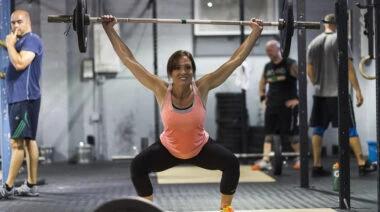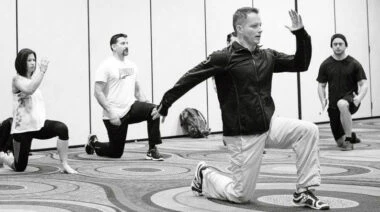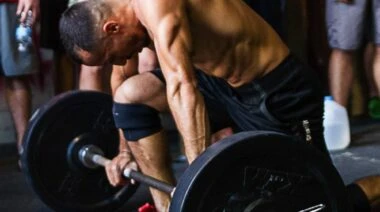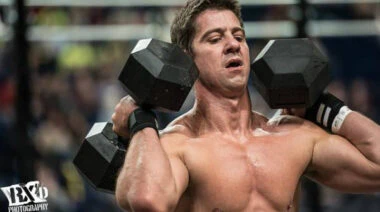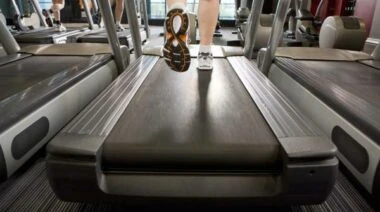The Ten Commandments of CrossFit
Historically, the Ten Commandments have been a guiding set of laws for leading a life and interacting with others within a community. In the realm of CrossFit, a training concept renowned for its strong sense of community, there exists a need for a similar set of guidelines. While CrossFit’s community aspect is one of its hallmarks, like any community, problem behaviors can surface. Here are ten commandments designed to govern your actions towards yourself and others in the CrossFit environment.
Thou Shalt Not Bear False Witness
In the intensity of a WOD (Workout of the Day), it’s common for everyone to lose count. The rapid pace and physical exertion can make it challenging to keep an accurate tally. However, there is a significant distinction between an honest miscount, such as thinking you’re on the seventh rep when you’re actually on the sixth, and the act of repeatedly cutting reps or inflating your score. The latter is neither honorable nor intelligent; it’s self – deception. Be truthful. If you achieve a low score, it’s not the end of the world. Everyone has their unique strengths and weaknesses. You might rank low in one workout but excel in another. Without an honest starting point, you can never truly gauge your progress.
Thou Shalt Be Concerned Only With Thyself
Despite the previous commandment, you should not even be aware if someone else has cheated. Why would you be counting their reps? In an individual WOD, the focus should be on your own performance, pitting yourself against your personal best. Stop being perturbed by what your fellow CrossFitter is doing and instead, focus on your own effort. If you were occupied counting someone else’s reps, were you truly giving your all to your own workout?
Thou Shalt No – Rep Thyself
CrossFit adheres to clear and specific movement standards. If you are physically unable to meet these standards, scale the workout as necessary and work towards attaining them. If you are capable, ensure that you meet these standards with every single repetition. Entering a competition with subpar technique and movements that deviate from the mark will leave you vulnerable to no – reps and a poor score. This ties back to the principle of being honest with yourself. Strive for high – quality movement in every session, and you will witness rapid progress.
Thou Shalt Listen to Thy Coach
Admittedly, there may be some less – than – ideal coaches in the CrossFit community. However, unless you possess the requisite qualifications, experience, and can objectively assess your own technique, it is crucial to listen attentively. If your coach advises you to reduce the load, comply. There is always a valid reason behind their advice, and it is almost invariably for your benefit.
Thou Shalt Not Walk in Front of Thy Neighbor’s Platform
Visualize this scenario: You are in the front – rack position with a heavy bar, preparing to dip and drive the bar overhead. Suddenly, someone steps into your line of vision, distracting you and throwing off your balance, causing you to collapse amidst a cloud of chalk and metal. It’s an unpleasant experience. Extend the same courtesy to others. If someone is about to lift or is in the midst of a lift, wait until they have completed it before crossing their platform.
Thou Shalt Tidy Up After Thyself
No one relishes the task of cleaning up your sweat – soaked AbMat or lugging your equipment back to its storage corner. Once you’ve finished using something, put it away. It’s a simple task. If you can manage a 100 – kg bench press, surely you can carry a 20 – kg plate back to the weight stack. Equally annoying is not preparing your equipment in advance. When everyone is set to start the WOD and you realize at the coach’s “three, two, one, go” that you don’t have a wall ball, you’re not only wasting your own time but everyone else’s as well. Read the workout board, observe the demo movements, familiarize yourself with the WOD, and set up your equipment beforehand.
Thou Shalt Not Limit Thyself to CrossFit
If your entire fitness routine consists solely of CrossFit, your proficiency will be confined to this one discipline. While this may be acceptable if it aligns with your goals, if you aspire to be a well – rounded athlete and prevent injuries, it is highly advisable to incorporate other forms of training into your schedule. Consider yoga and Pilates. Although they may seem less intense to die – hard CrossFitters who believe sweating is the only sign of a good workout, CrossFit predominantly focuses on movements in the sagittal plane. By training in the frontal and transverse planes through yoga and Pilates, you engage muscles that are not commonly used in CrossFit, reducing the risk of injury. Additionally, these practices enhance flexibility and core strength, both of which are essential for CrossFit. Don’t dismiss them without giving them a try.
Honor Thy Coach and Thy Instructor
Do you think you know everything? The odds are against it. When your coach offers you advice, embrace it wholeheartedly. These individuals have dedicated countless hours to training and have witnessed numerous lifts. Their experience is invaluable; listen to their guidance.
Thou Shalt Encourage Thy Neighbor
During an AMRAP (As Many Rounds As Possible) workout, this may be challenging. However, in team WODs or for – time formats, if you finish early, take a moment to catch your breath, suppress the urge to vomit, and shout words of encouragement to those still persevering. We’ve all experienced that moment when we have reps left and wish the coach would call “Time.” A few simple shouts like “You can do it!” or “Five more reps!” can be the difference between pushing through and giving up. After all, CrossFit is built on its community spirit.
Thou Shalt Leave Thy Ego at the Door
In CrossFit, the two primary causes of injury are ego and poor coaching. Whether it’s attempting to complete a workout as prescribed (RX) when you lack the strength to maintain proper form, showing off with muscle – ups during skill work, or starting at 90% of your 1RM (One – Rep Max) from an empty – bar warm – up, it all boils down to ego. This not only irritates your fellow CrossFitters but can also be extremely dangerous. Warm up gradually, scale the workout when necessary, and save your flashy ring work for after the class.
Thou Shalt Work on Thy Weaknesses
Perhaps you love doing pull – ups all day and can perform a handstand walk after a WOD, but struggle to front – squat more than a bar with a couple of bumpers. Typically, if you dislike a particular movement, you’re likely not proficient at it. While you can continue to practice your gymnastics skills, neglecting basic strength work will hinder your progress in CrossFit. CrossFit encompasses a wide range of movements for a reason – to challenge the body in diverse ways. If you’re a one – dimensional athlete, you’ll soon be left behind as others progress to more advanced levels. Allocate more time to improving your weak areas than to practicing what you’re already good at.
Summary
Adhering to these ten commandments is likely to enhance your CrossFit experience, making it more enjoyable and well – rounded. Consistently disregarding them, on the other hand, may lead to you becoming less popular than a seven – minute burpee session.
Do you believe there are other commandments that should be added to this list? What do you think should be inscribed on the walls of every CrossFit box?
You might also be interested in these articles:
– The 25 Rules of Strength Training
– The Two Cardinal Rules of CrossFit
– A Weightlifting Etiquette Handbook for CrossFitters
– What’s New on Breaking Muscle Today
Photo 1 courtesy of Shutterstock.
Photos 2, 3, & 4 courtesy of CrossFit Empirical.
